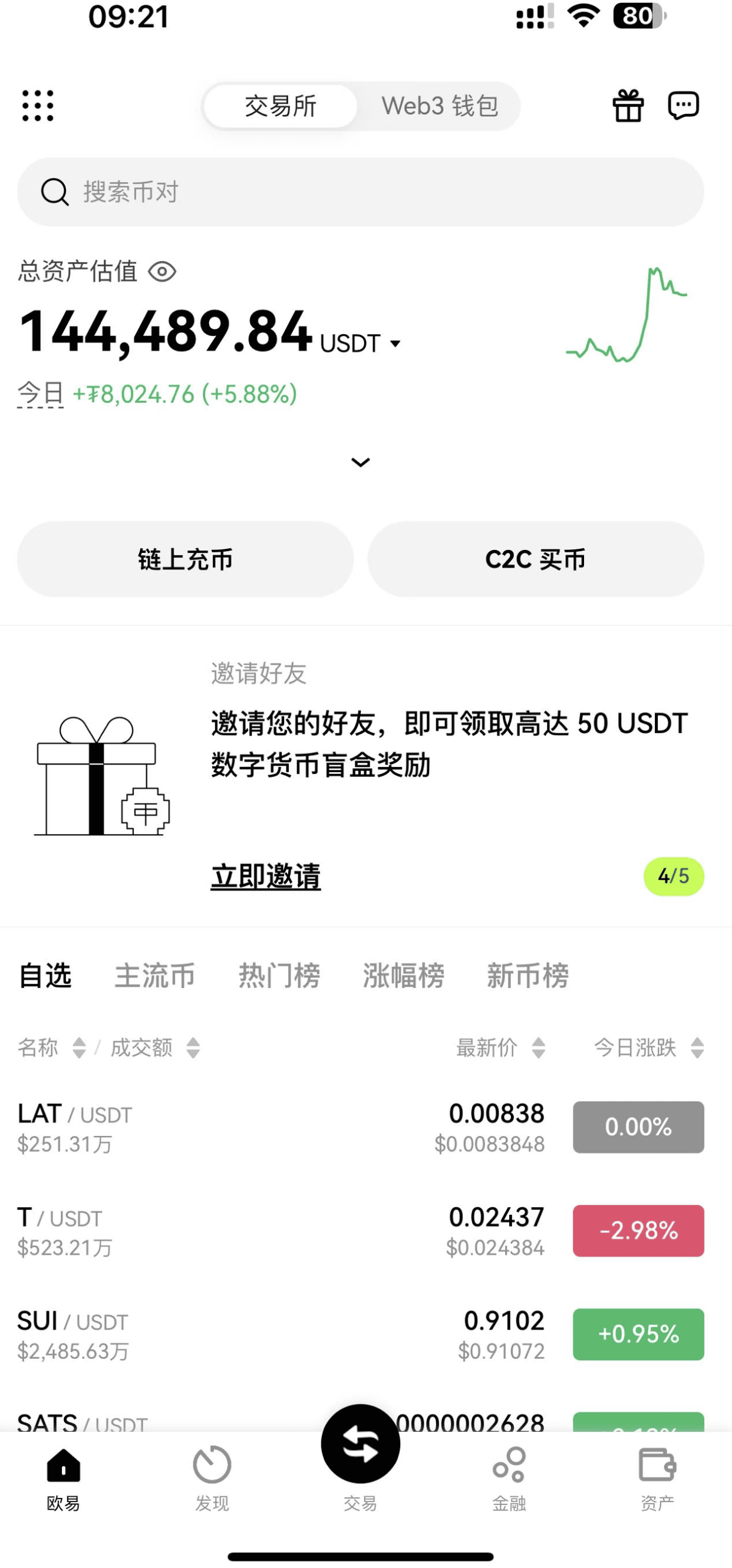In the crypto world, being 'poor' is a original sin—he turned 'sin' into a skill worth 100,000U with 1000U!
Chapter One: The Confusion of Entering the Crypto World—1000U's Trial and Despair.
When Little Li first encountered cryptocurrency, like all newcomers, his mind was filled with fantasies of 'getting rich overnight.' He charged into the market with the 1000U he had saved up by being frugal, but in less than a week, due to chasing highs and selling lows, and contract liquidations, he was left with only 200U.
'This market is essentially a casino!' He angrily uninstalled the exchange app but secretly reinstalled it in the middle of the night—he was unwilling to accept it, really unwilling.
Until one day, he saw someone sharing their trades in a crypto community: following the teacher's real trades, doubling their money in three days.
His first reaction was: scam, definitely a scam.
But when he clicked into that person's profile, he found that the other party had been updating their trading records continuously for a month, and each transaction was well-reasoned—technical analysis, position management, stop loss and take profit, and even explaining 'why we should wait for a breakout before entering here.'
Little Li's heart wavered: 'Maybe... there really is someone who can lead the way?'
Chapter Two: From Doubt to Trust—The teacher's 'first lesson' is not about making money, but about 'surviving.'
Little Li mustered up the courage to privately message that 'teacher.' The other party didn't rush to sell courses or give signals, but first asked him two questions:
'Do you understand candlestick charts? Do you know how to use MACD and RSI?'
'Can you accept a 50% loss of your principal?'
Little Li hesitated to answer, but the teacher said:
'First learn the techniques, then talk about making money. Tomorrow I will do a live trading session; you can watch for three days, no charge, no signals, just logic.'
In those three days, Little Li absorbed knowledge like a sponge:
How the teacher determines the bottom through 'support levels + trading volume';
'Why reduce your position when Bitcoin falls below the moving average instead of averaging down?'
Contracts are not gambling; they are using small leverage to amplify certain opportunities. The key is that the teacher will review erroneous operations on the spot: 'Look, I was greedy on this trade, didn't take profit as planned, and as a result, the profit reverted by 30%.'
Little Li was completely convinced: 'So even masters make mistakes, but they will cut losses in time, not stubbornly hold on.'
Chapter Three: The First Copy Trade—From 'Trembling with Fear' to 'Suddenly Enlightened.'
A week later, the teacher suddenly said in the group: 'ETH's pullback to around 1600U has a daily bottom divergence, you can take a small long position.'
Little Li stared at the screen, his palms sweating—this was his first time 'truly trading.'
He only invested 100U according to the teacher's instructions:
Set the stop loss at 1550U;
Targeting 1750U;
'If it breaks 1700U, add 50U to the position.'
The result? ETH surged to 1800U in three days, and Little Li's 100U turned into 145U.
'I made 45% on this deal!' He excitedly typed in the group, but the teacher calmly replied:
'Don't get carried away; this is just good luck. Next time, you might hit a stop loss, be mentally prepared.'
But Little Li knew this was not just luck—the teacher used a replicable trading system to turn 'gambling' into a 'probability game.'
Chapter Four: From 'Copying Trades' to 'Independence'—How to turn 1000U into 100,000U?
In the next three months, Little Li seemed like a different person:
Every day reviewing the teacher's trading records, summarizing 'why this trade made money, and why that trade needed to stop loss.'
Practice technical analysis with a demo account until you can independently draw trend lines and identify head and shoulders.
Strictly control position sizes, and no longer dare to 'go all in' or 'heavily bet on a direction.'
The teacher's strategies became increasingly precise:
Shorting altcoins in a bear market;
In a bull market, hold onto your assets;
Setting key limit orders.
When Little Li's account first broke through 10,000U, the teacher said to him:
'Now you can operate on your own, but remember two points:
Never risk more than 30% of your position;
After making money, withdraw a portion, don't let profits become just numbers.
Chapter Five: Behind 100,000U—it's 'the teacher' and also 'the guide.'
A year later, Little Li's account balance was fixed at 102,375U.
He no longer traded frantically, instead transferring most of his funds to stablecoin wealth management, leaving only 10% to continue learning 'arbitrage strategies' from the teacher.
Someone asked him, 'What are you most grateful to the teacher for?'
He said, 'It's not about teaching me how to make money, but about teaching me how not to lose money.'
'The most dangerous thing in the crypto world has never been a bear market, but the arrogance of thinking you can control everything.'

'If you want to earn steadily and compound your profits, I can help you make money in this market, so you won't be like a blind leek, at the mercy of the market.'
But still, the same saying applies: you must first have execution power; as the saying goes, a prodigal son does not turn back, even a deity finds it hard to save him.#财富密码 #亚洲家族办公室加密资产配置


